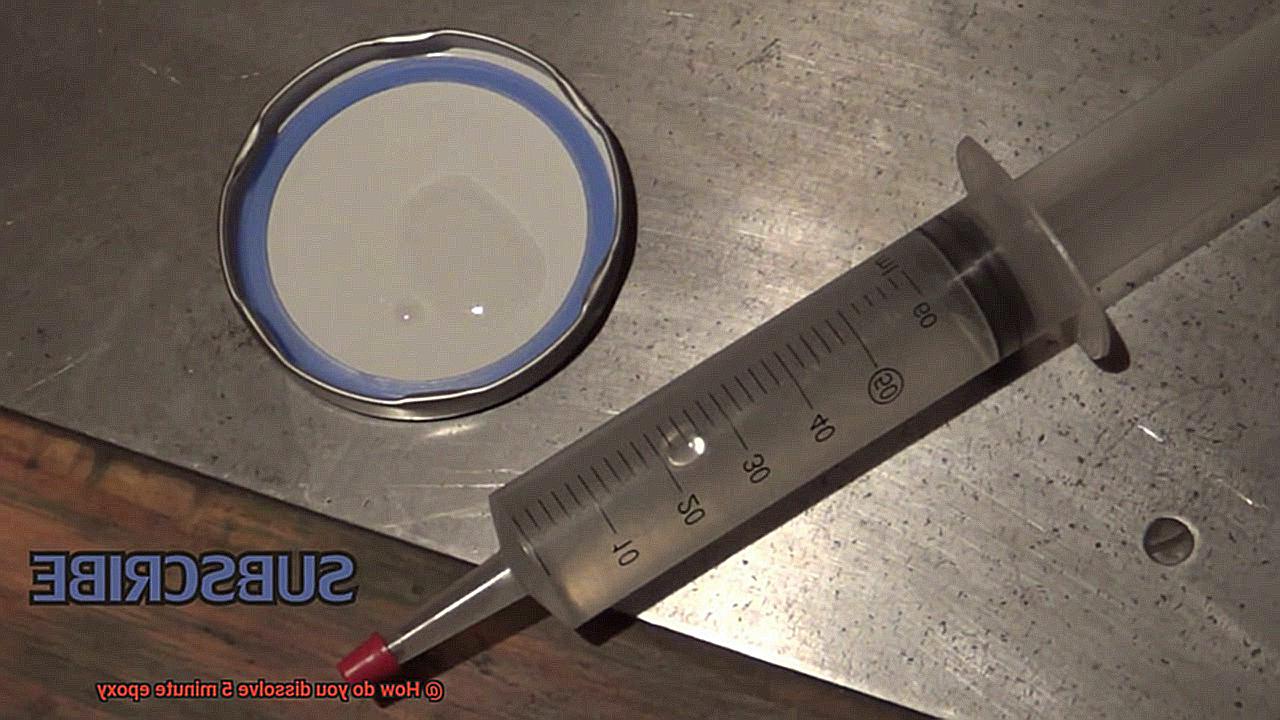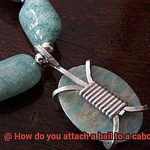Epoxy is a miracle adhesive that can bond almost anything, from metal to plastic, wood to glass. It’s a go-to solution for DIY enthusiasts and professionals alike, but even the most skilled craftsmen can make mistakes. If you’re dealing with an accidental spill or need to remove 5-minute epoxy from a surface, you might be wondering how to dissolve it.
Don’t panic. While epoxy is tough stuff, there are ways to dissolve it safely and effectively. Sure, you could try using harsh solvents like acetone or mineral spirits, but they can be harmful to your skin and the environment. Instead, we’ve got some better options for you.
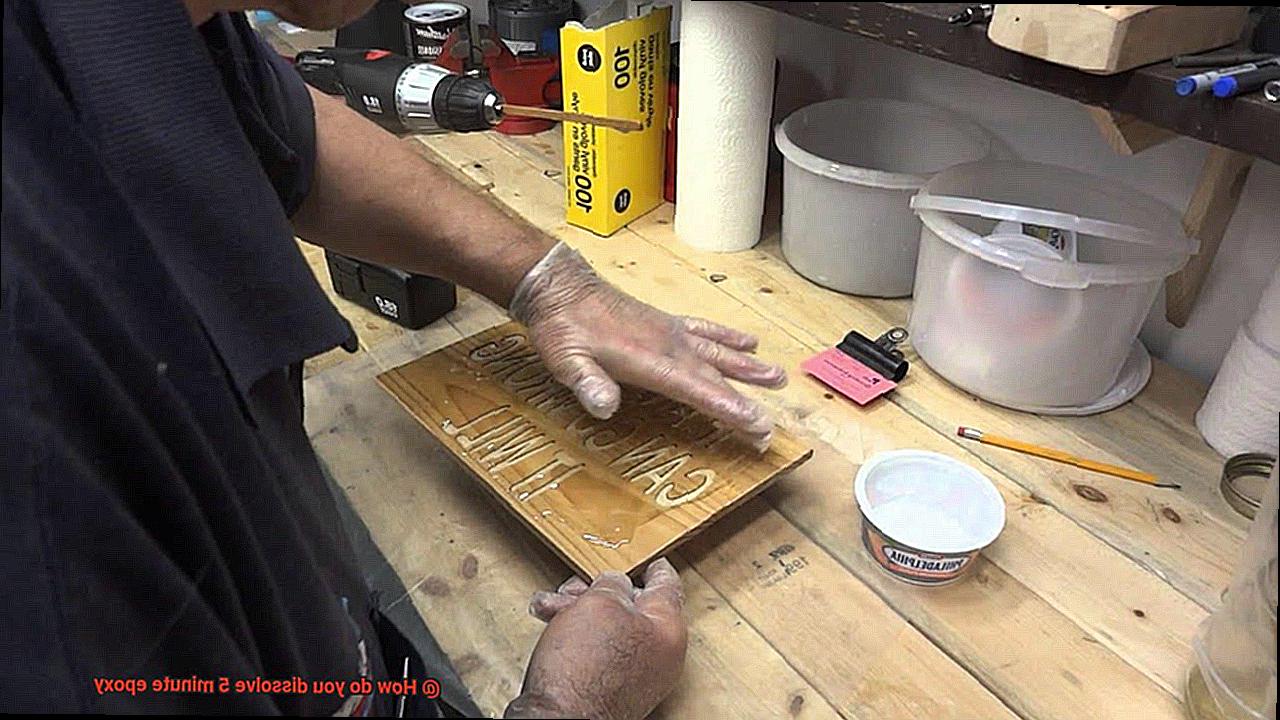
In this blog post, we’ll explore various methods to dissolve 5-minute epoxy without damaging your skin or surfaces. We’ll cover household items like vinegar and baking soda that you probably have lying around already, as well as commercial epoxy removers for more stubborn spills.
But wait – there’s more. We’ll also share tips on what NOT to do when trying to dissolve epoxy. Trust us; you don’t want to make things worse by using the wrong technique or leaving behind a sticky residue.
So if you’re in a sticky situation and looking for safe and efficient ways to get rid of 5-minute epoxy, keep reading.
Why Would You Need to Dissolve 5 Minute Epoxy?
Contents
- 1 Why Would You Need to Dissolve 5 Minute Epoxy?
- 2 How to Dissolve 5 Minute Epoxy Using Acetone
- 3 How to Dissolve 5 Minute Epoxy Using Heat
- 4 How to Dissolve 5 Minute Epoxy Using Vinegar
- 5 Tips and Precautions for Dissolving 5 Minute Epoxy
- 6 Advantages of Dissolving 5 Minute Epoxy
- 7 Disadvantages of Dissolving 5 Minute Epoxy
- 8 Alternatives to Dissolving 5 Minute Epoxy
- 9 Conclusion
Maybe you applied too much or accidentally spilled it in the wrong area. In these instances, dissolving 5 minute epoxy can be a lifesaver. But why would you need to dissolve it in the first place?
One reason is if you made a mistake during the application process. Perhaps the epoxy didn’t cure correctly, leaving a sticky or uneven surface. In this case, dissolving the adhesive can provide an opportunity to start over and achieve a better result.
Another reason why you may need to dissolve 5 minute epoxy is if you need to remove it from a surface. Scraping off the epoxy can damage the surface underneath, making it necessary to dissolve the adhesive instead.
But how do you dissolve 5 minute epoxy? There are several methods, each with its own benefits and risks.
The first and most common method is using acetone. Acetone is a powerful solvent that can break down the chemical bonds in the epoxy, allowing it to dissolve. Simply apply the acetone directly onto the hardened epoxy and allow it to soak for several minutes before using a scraper or cloth to remove the softened adhesive.
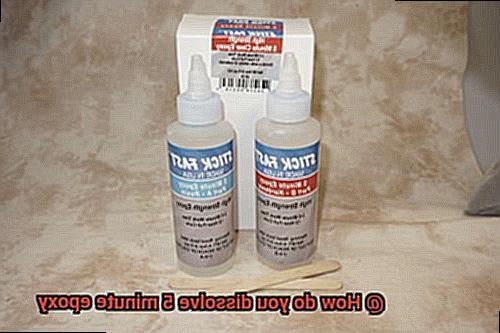
Another way to dissolve 5 minute epoxy is through heat application. Heat can soften and loosen the hardened epoxy, making it easier to remove. You can use a heat gun or hairdryer to apply heat onto the epoxy surface, but be sure to wear protective gear such as gloves and goggles when using this method.
Vinegar is also a viable option for dissolving 5 minute epoxy. Vinegar contains acetic acid, which can react with the epoxy and break down its chemical bonds. To use vinegar, soak a cloth in vinegar and place it over the hardened epoxy. Leave it on for several hours before attempting to remove the softened adhesive.
It’s important to note that while these methods may work for dissolving 5 minute epoxy, they may also damage the surface underneath. Always test these methods on a small inconspicuous area before attempting to dissolve larger areas of hardened epoxy.
How to Dissolve 5 Minute Epoxy Using Acetone
If you need to dissolve 5 minute epoxy, acetone is a common solution that is readily available at most hardware stores. However, it is important to use caution when handling acetone as it can also dissolve other materials and should only be used on surfaces that can withstand its effects. In this guide, we will explain how to dissolve 5 minute epoxy using acetone in five easy steps.
Step 1: Gather Your Materials
To dissolve 5 minute epoxy using acetone, you will need the following materials:
- Acetone
- A clean cloth
- A plastic scraper
- Make sure to wear gloves and work in a well-ventilated area while using acetone.
Step 2: Apply Acetone to the Epoxy
Use the cloth to apply acetone to the area where the epoxy is located. Be sure to use enough acetone to fully saturate the epoxy. Depending on the amount of epoxy and how long it has been on the surface, it may take anywhere from a few minutes to an hour or more for the epoxy to dissolve completely.
Step 3: Wait for the Epoxy to Dissolve
Allow the acetone to soak into the epoxy until it dissolves. Be patient during this process, as it may take some time for the epoxy to fully dissolve.
Step 4: Scrape off Any Remaining Epoxy
Once the epoxy has dissolved, use a plastic scraper to remove any remaining residue. Be cautious not to scratch or damage the surface of the object.
Step 5: Clean the Area Thoroughly
After all of the epoxy has been removed, clean the area thoroughly with soap and water to remove any remaining residue from the acetone.
It is important to note that acetone is not always effective at dissolving 5 minute epoxy, especially if it has already hardened. In these cases, you may need to try other solvents or mechanical methods to remove the epoxy. Additionally, acetone should only be used on surfaces that are resistant to its effects, such as metal or glass.
How to Dissolve 5 Minute Epoxy Using Heat
Using heat can be an effective way to dissolve the adhesive. However, it is important to take certain precautions and follow proper safety guidelines when using this method.

Gather your materials
Before beginning the process, ensure that you have a heat gun or hair dryer, gloves, a scraper or putty knife, and a damp cloth nearby. It is also recommended to wear eye protection.
Apply heat
Turn on your chosen heat source to a low-medium temperature and hold it about 2-3 inches away from the epoxy surface. Slowly move the heat source back and forth over the area for several minutes until the epoxy softens and becomes more pliable. Avoid holding the heat source too close or in one spot for too long, as this can cause damage to the surface underneath or create a fire hazard.
Scrape away the epoxy
Once the epoxy has softened, use your scraper or putty knife to gently pry it off of the surface. Be careful not to apply too much pressure or scratch the underlying surface. Repeat the heating and scraping process if necessary until all of the epoxy has been removed.
Clean up
After removing all of the epoxy, clean the area thoroughly with soap and water to eliminate any remaining residue. Wear gloves during this process to avoid skin irritation or burns.
Test on a small area
It is important to remember that this method may not work on all surfaces or epoxy formulations. Always test on a small inconspicuous area before attempting to dissolve larger areas of hardened epoxy.
How to Dissolve 5 Minute Epoxy Using Vinegar
Removing 5 Minute Epoxy from a surface can be a daunting task, but using vinegar can make it easier. Vinegar contains acetic acid, which can break down the bond between the epoxy and the surface it’s adhered to. However, it’s important to keep in mind that vinegar may not work for all types of epoxy, especially if it has already hardened.
To dissolve 5 Minute Epoxy using vinegar, you will need to gather your materials. You will need white vinegar, a container large enough to hold the item with the epoxy, and a brush or scraper to help remove the softened epoxy. Once you have everything you need, pour enough vinegar into the container to fully submerge the item with the epoxy. Let it soak for several hours or overnight for best results.
After soaking, use a brush or scraper to gently remove any softened epoxy. It’s essential to be cautious not to damage the surface underneath as you scrape away the adhesive. If there are still areas of epoxy that have not softened, repeat the soaking process until all of the epoxy has been removed.
It’s crucial to test a small area first before attempting to dissolve larger areas of epoxy as vinegar may not work for all types of surfaces. Wearing gloves and eye protection is recommended when working with vinegar and other chemical solutions. This precautionary measure will ensure that you stay safe while working with these chemicals.
Tips and Precautions for Dissolving 5 Minute Epoxy
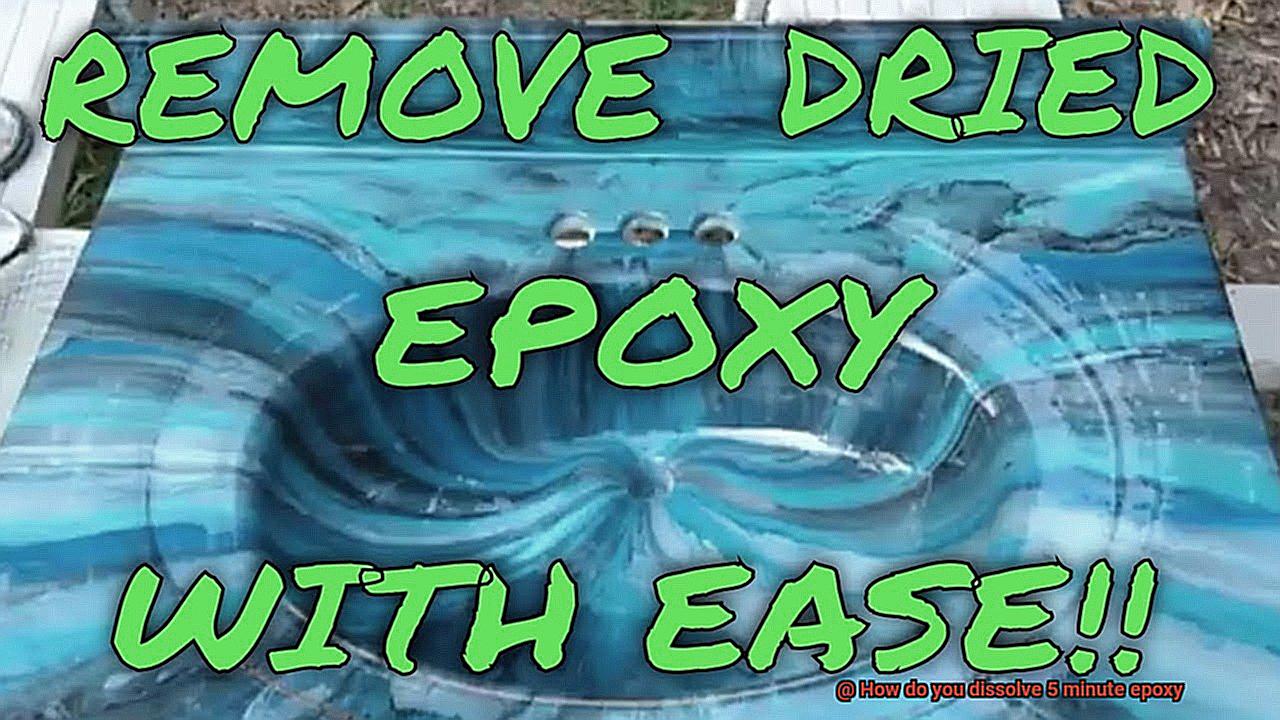
Removing 5 minute epoxy can be a challenging task, but with the right precautions and tips, you can get the job done safely and effectively. Here are five sub-sections that will guide you through the process:
Protective Gear is a Must
When working with chemical solvents, it is essential to wear protective gear such as gloves and goggles. This will prevent any potential harm from coming into contact with your skin or eyes. In addition, work in a well-ventilated area to avoid inhaling any fumes from the solvent. Your safety should be a top priority.
Choose the Right Solvent
Choosing a solvent that is compatible with the material that the epoxy is adhered to is crucial. Some solvents can damage certain materials, so it is important to do some research beforehand to ensure that you are using the right one. Acetone and rubbing alcohol are two common solvents that are often used for dissolving epoxy. However, always test the solvent on a small, inconspicuous area before applying it to the entire surface.
Prepare the Surface
Before applying the solvent, use a scraper or sandpaper to remove any excess epoxy that may be on the surface. This will allow the solvent to penetrate more effectively and speed up the dissolving process. However, be careful not to use too much force when scraping as this can cause damage to the surface.
Monitor Progress
Once the solvent has been applied, give it time to work and fully penetrate the epoxy. This can take anywhere from a few minutes to several hours depending on the strength of the solvent and the thickness of the epoxy. It is important to monitor the progress of the dissolution process and not leave the solvent on for too long as this can cause damage or discoloration to the surface underneath.
Clean Up Properly
Finally, after the epoxy has been dissolved, clean up any remaining residue with soap and water or another appropriate cleaning solution. This will ensure that there is no leftover residue that can cause any issues later on. Avoid using harsh abrasives or tools that could scratch or damage the surface being treated. Instead, use a soft cloth or sponge to gently apply the solvent and remove the epoxy.
Advantages of Dissolving 5 Minute Epoxy
There is a surprising solution – dissolving 5 minute epoxy. Yes, it may sound counterintuitive, but dissolving this type of glue actually offers great advantages.
Firstly, the most significant benefit of dissolving 5 minute epoxy is how easy it makes removal. Whether you need to reposition your materials or made a mistake during the bonding process, dissolving the glue can make it a breeze to start over. Plus, it’s a cost-effective solution as you won’t have to purchase new materials for your project.
In addition, dissolving 5 minute epoxy allows you to reuse your materials. This is especially useful if you’re working on a project that requires several adjustments or modifications. Rather than being stuck with a permanent bond, dissolving the glue gives you a chance to start over and get the job done right.
Unlike other removal methods such as scraping or sanding, dissolving 5 minute epoxy is often safer for your materials. Scraping or sanding can damage or scratch delicate surfaces, but dissolving the glue provides gentle removal without any harm. This makes it an ideal solution for projects where precision and care are essential.
Furthermore, dissolving 5 minute epoxy can be advantageous when you need to remove glue from hard-to-reach areas. By soaking a cloth in solvent and wrapping it around the glued area, the solvent can penetrate the adhesive and dissolve it.
Lastly, dissolving 5 minute epoxy is an eco-friendly option compared to disposing of materials that cannot be salvaged due to permanent bonding. It reduces waste and helps protect the environment.
Disadvantages of Dissolving 5 Minute Epoxy
Removing 5 minute epoxy can be a daunting task, especially if you’re considering dissolving it. While this may seem like the easiest and most cost-effective solution, it’s important to consider the potential disadvantages before diving in.
One major disadvantage is the potential harm that can be caused to surrounding materials. The chemicals used to dissolve the adhesive can damage or weaken other materials, such as plastic or wood, that may be nearby. This could lead to further damage or even complete destruction of your beloved project. It’s important to take extra care and consider using protective gear to prevent any harm.
Furthermore, some solvents used to dissolve 5 minute epoxy can be hazardous if not handled properly. They can be flammable or emit toxic fumes, which could cause harm to your health if not used with proper ventilation. Safety should always be a top priority when working with any type of chemical.
In addition, removing 5 minute epoxy through dissolving can be a long and tedious process. It may take multiple attempts with different solvents and techniques before the adhesive is fully dissolved, which can be frustrating and time-consuming. The process requires patience and persistence, and you might have to try different methods until you find the one that works best for you.
Finally, dissolving 5 minute epoxy may not always be the best solution. If the adhesive is holding together an important or valuable object, attempting to dissolve it could cause more harm than good. In these cases, seeking the assistance of a professional or exploring alternative methods for removing or repairing the object may be a better option.
Alternatives to Dissolving 5 Minute Epoxy
Removing 5 minute epoxy can be a hassle, and dissolving it isn’t always the best option. Fortunately, there are alternatives that are just as effective and less risky.
One alternative is to use heat. By using a heat gun or hair dryer, you can warm up the epoxy and make it easier to scrape or peel away. However, be cautious not to overheat the area, as this can cause damage or even start a fire.
Mechanical means such as sanding or grinding can also be used to remove the epoxy. This method is best for small areas or surfaces that can handle some abrasion. Keep in mind that it can be time-consuming and may require special equipment.
Chemical solvents like acetone and alcohol are another alternative to dissolving epoxy. These solvents can break down the bond of the epoxy, but it’s important to test them on a small area first and wear protective gear as they can be harmful if not used properly.
When choosing which alternative to use, consider the surface and situation at hand. Each method has its own pros and cons, so choose what will work best for your project.
gwMTVS_BgFY” >
Conclusion
To sum up, removing 5-minute epoxy may seem like a daunting task, but it can be accomplished safely and effectively with the right methods and precautions. While dissolving the epoxy may appear to be the easiest solution, it’s important to consider potential drawbacks and alternatives before proceeding.
Common methods for dissolving 5-minute epoxy include acetone, heat application, and vinegar. However, testing these methods on a small area first and wearing protective gear when handling chemical solvents are essential precautions. Preparing the surface beforehand and monitoring progress during the dissolution process are also crucial steps.
Dissolving 5-minute epoxy offers several advantages such as easy removal, reusability of materials, gentler removal compared to scraping or sanding, eco-friendliness, and ability to remove glue from hard-to-reach areas. However, there are disadvantages such as potential harm to surrounding materials, hazardous chemicals if not handled properly, long and tedious process requiring patience and persistence.
Alternatives to dissolving 5-minute epoxy include using heat or mechanical means like sanding or grinding or chemical solvents like acetone or alcohol. Each method has its own pros and cons depending on the surface and situation at hand.
By following the tips and precautions outlined in this article and selecting the best method for your project needs, you can successfully remove 5-minute epoxy without causing damage or harm.

